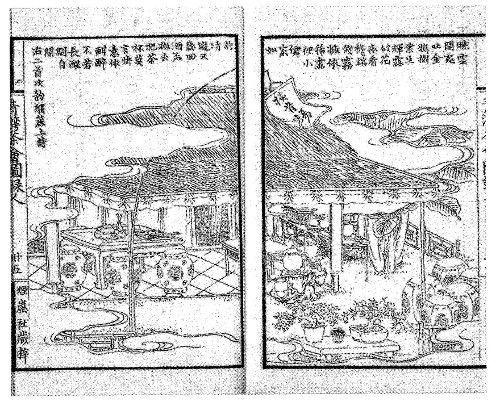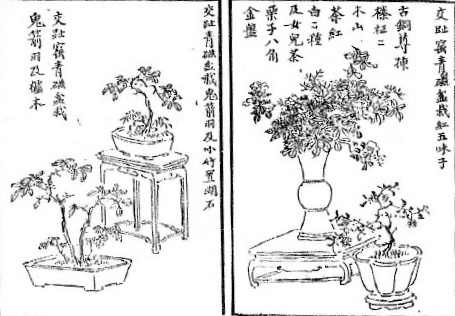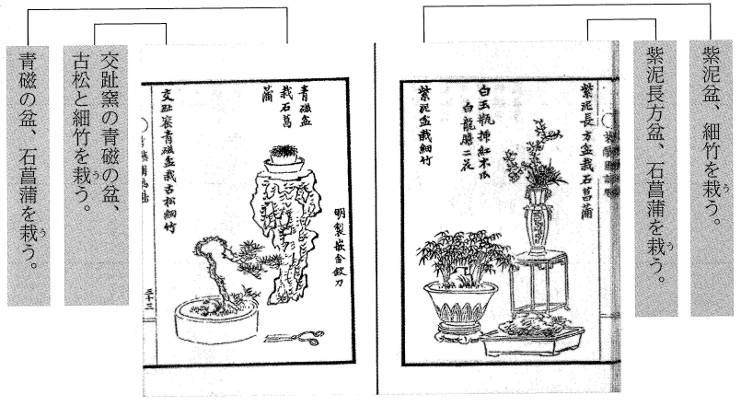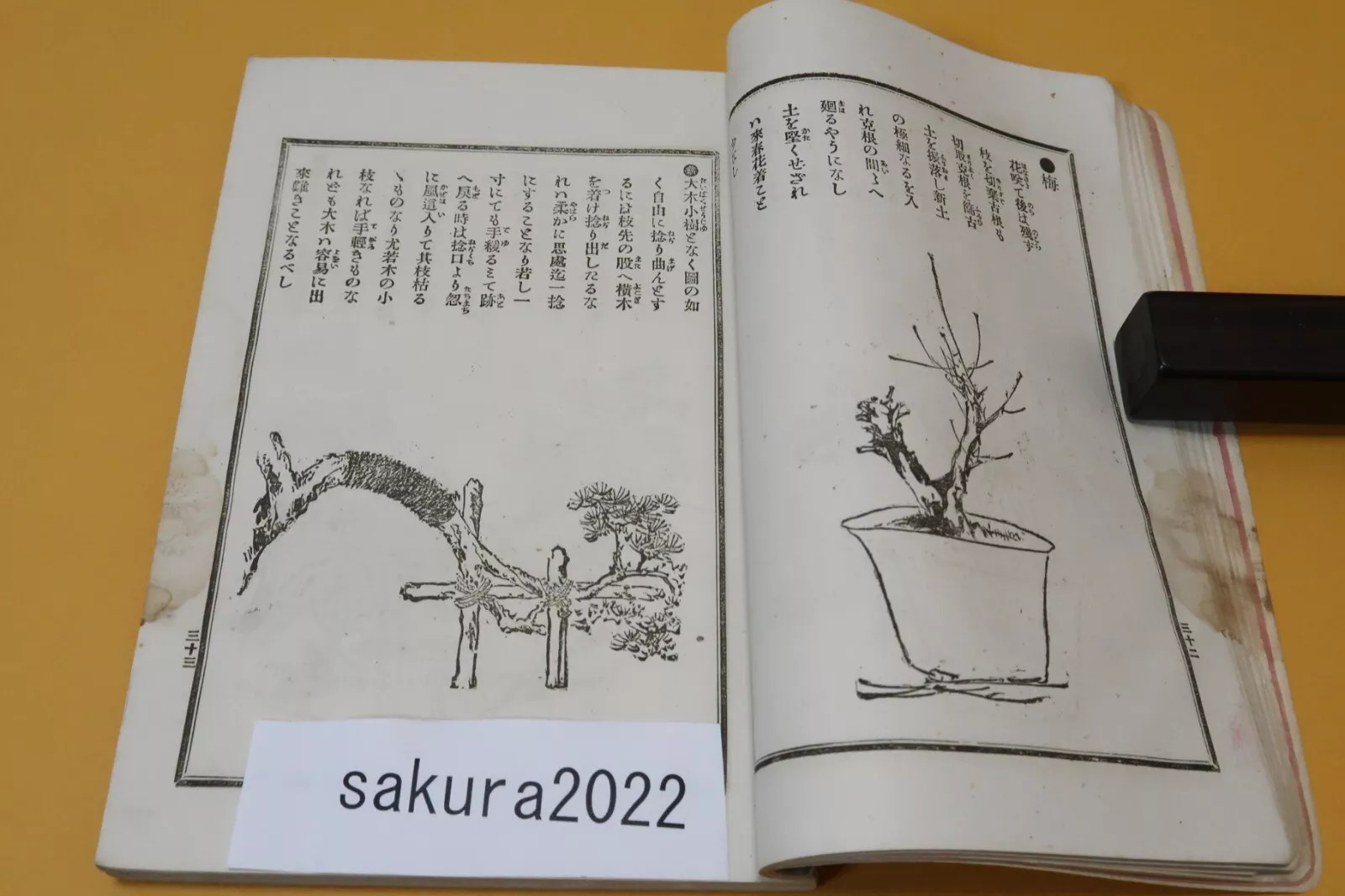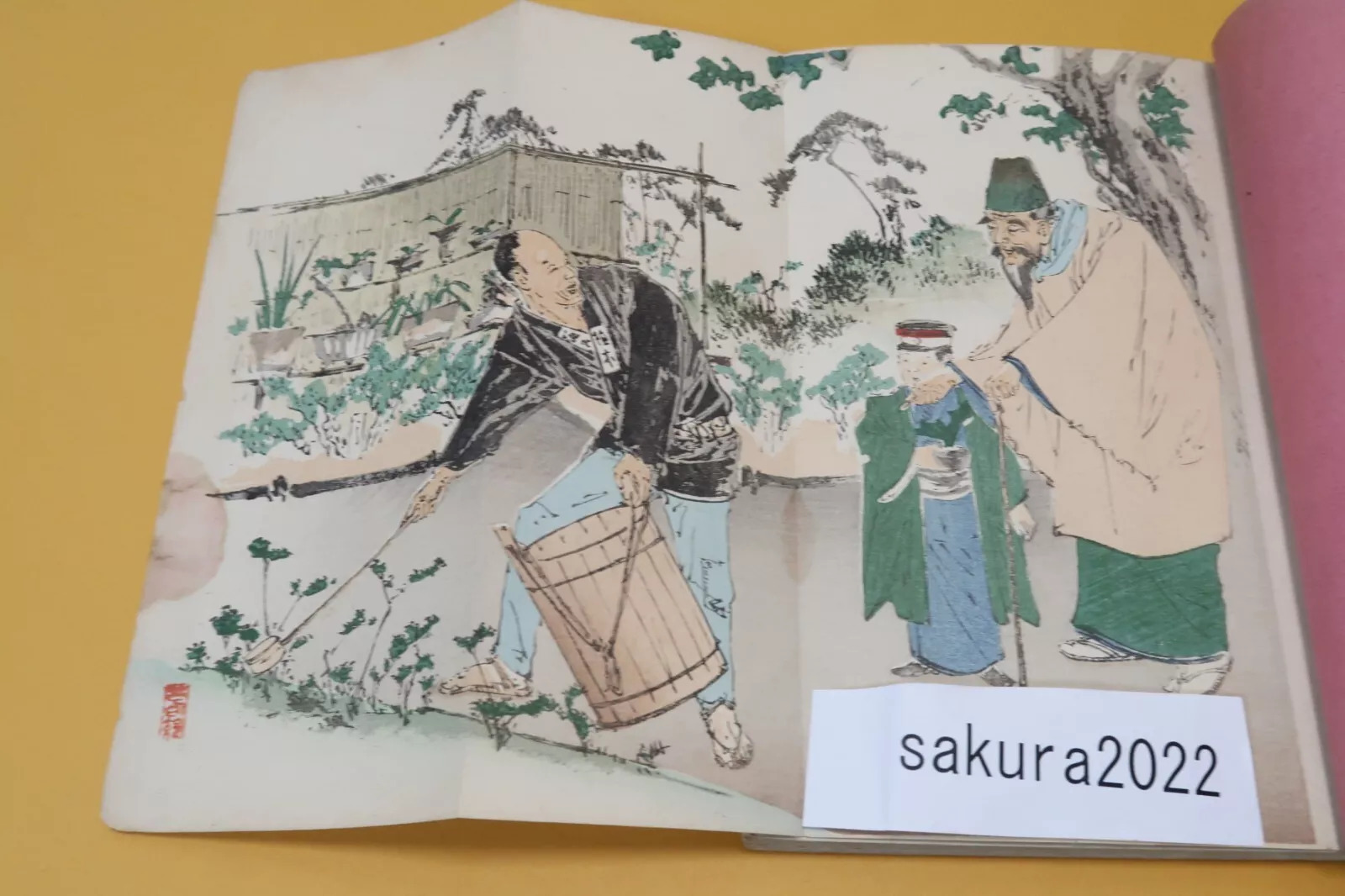|
JA
Seiwan Chaka Zuroku
JA
Bonsai Kabenzu
JA Seiwan Meien Zushi (Illustrated Record of the Tea Banquet at Sweiwan) edited by Yamanaka Kichirobee (1845-1917) (Osaka: Shikada Seishichi; 1876). A popular account of an imnportant sencha gathering in 1874 held by the major Japanese antique shop in Osaka, Yamanaka shunkōdō. On the eighth day in the eleventh lunar month of 1874, a tea gathering was held in Seiwan in remembrance of the late father of the shop's owner in which Chinese painting, calligraphy, various kinds of antiquities, and flower arrangements were put on display. This grand gathering had thirteen tea banquets or seki, each held in a different space. In addition to the Yamanaka shop, twelve other collectors or antique shops were also invited to bring their collections to participate in this banquet of tea and art. Later the Seiwan Meien Zushi (aka Pictorial Record of Famous [Chinese] Utensils Used at the Azure Sea Society Sencha Gathering) was published with illustrations by the Nanga painter Tanomura Chokunyû (1814-1907) to record and commemorate the whole event. After a depiction of each seki was a chapter "Viewing Flowers and Trees of the Four Seasons with Sincerity and Idleness" which illustrated the different flower arrangements and bonsai viewed during the tea gathering. This record contains a specific reference which shows the change in attitude towards the art of dwarfed potted trees. A special effort was made in this publication to call the hobby "bonsai." There was also an 1881 edition from Tokyo: Nagao Ginjiro. 3
JA
Bijutsu Bonsai Zu
JA Ogawa, Anson Bonsai Baiyo Tebiki Sou (How to Raise Herbs and Grass for Bonsai) ; 1893.
JA
Okamoto, Nobufumi
Zouka Mokuchiku Bonsai Baiyoho (Complete Maintenance Methods for
Grasses, Flowers, Trees, and Bamboo Bonsai)
; Kaishin-Shyoro; 1894.
JA
Okamoto, Jun
Gakei chikuzō hakoniwa bonseki zuhen
; Tōkyō: Shūgakudō; 1898. 131 pp. Illustrations, some color. USDA
6
JA
Kurakawa, Shinzaburō
Seishoō yoroku
|
